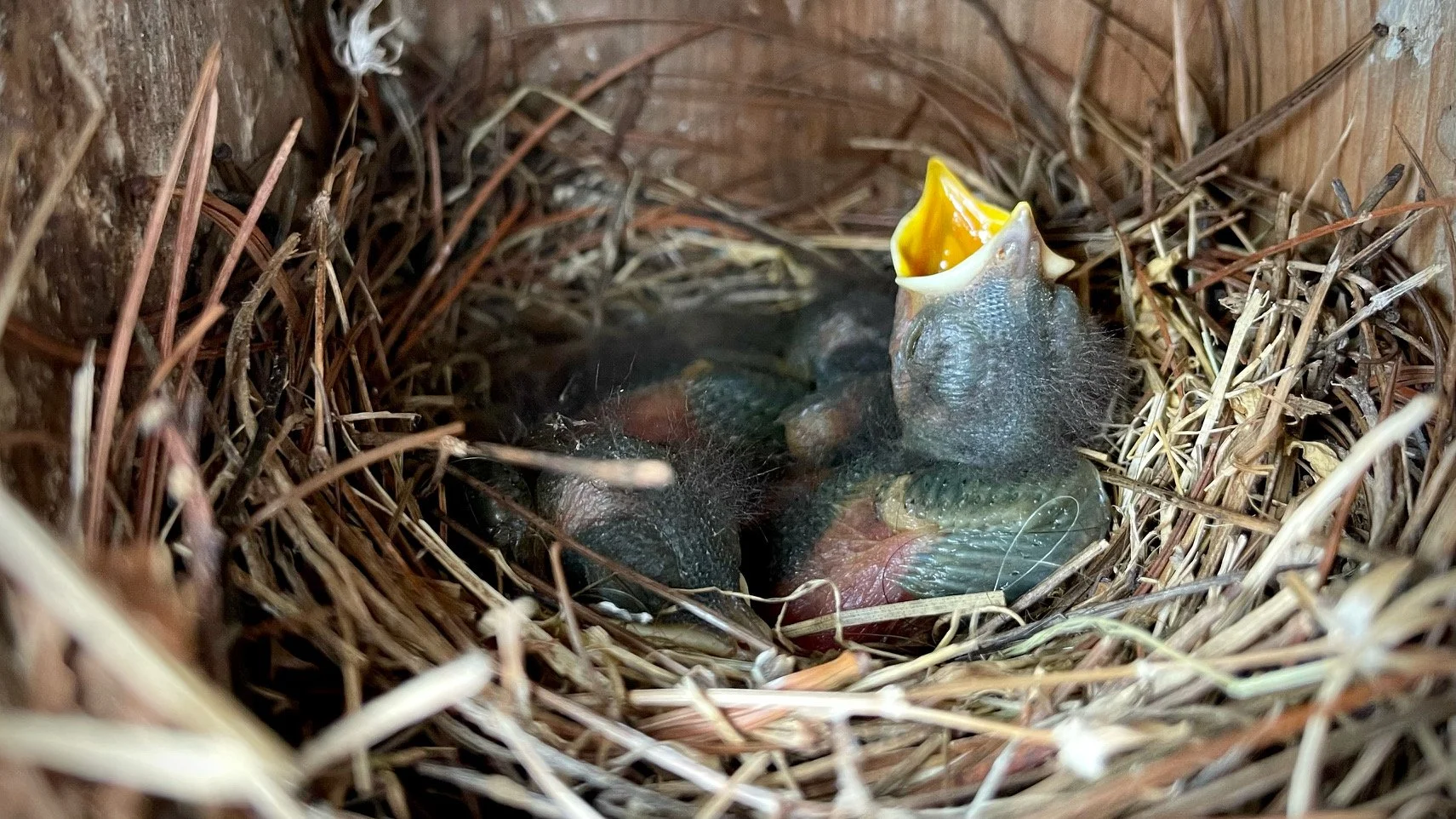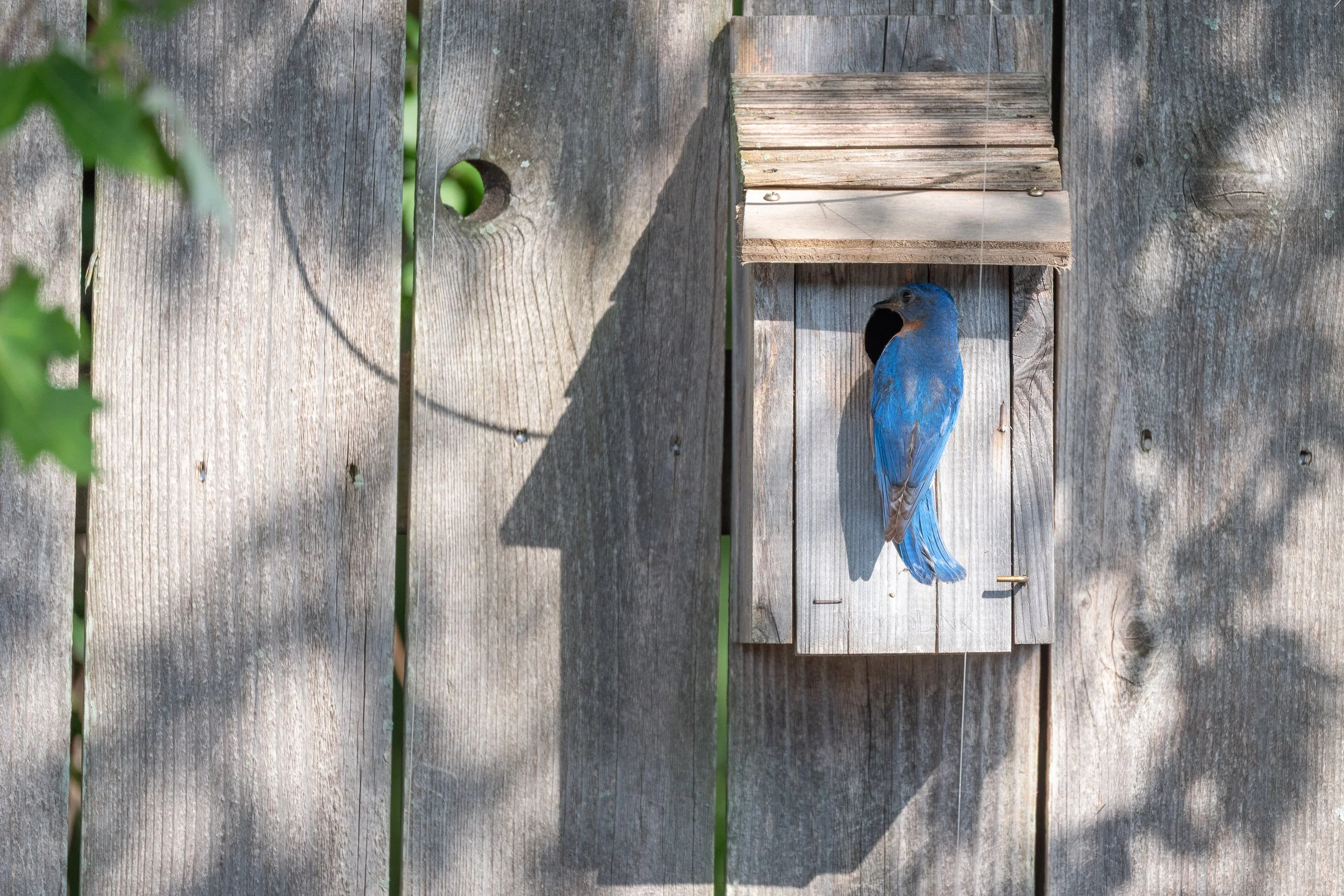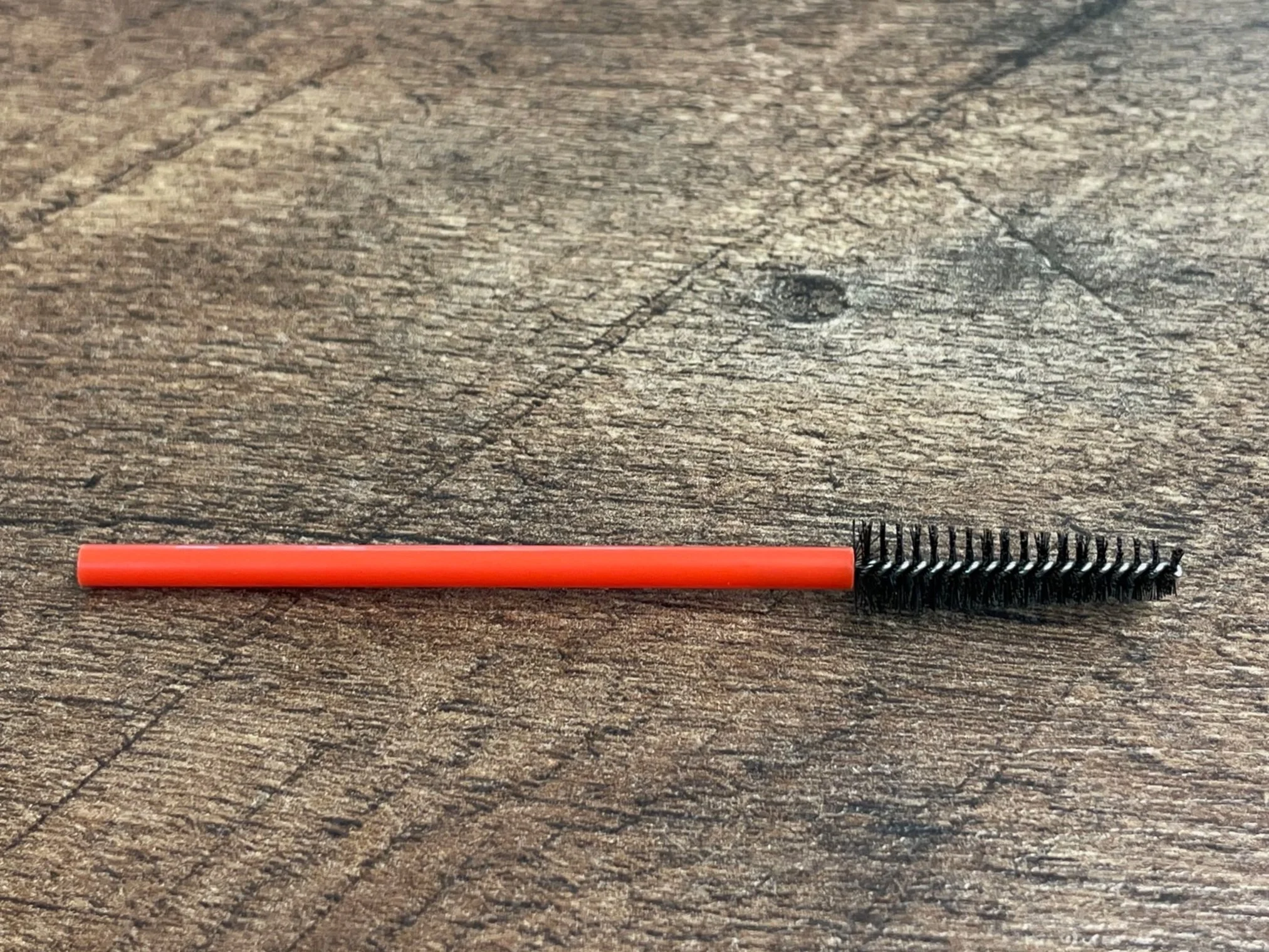A Second Brood of Bluebirds
A few weeks back while taking the trash out to the dumpster behind the store, I realized I was being watched. Peeking out from the entrance hole of our bluebird box was the female bluebird! The next morning after I observed her up on the telephone line, I decided that it would be a good time for a quick peek in the box. A brief glance revealed 3 eggs!
Male Bluebird Feeding Young
Photo by Eli Haislip
This is our second nesting this year in our back alley box, which is the most we’ve experienced in that location. In the previous years we’ve had the box up, we haven’t seen more than one nesting. A quick look in the box yesterday revealed that there are three healthy babies inside!
A Hungry Baby Bluebird
Photo by Eli Haislip
Bluebirds will nest up to three times in a season, sometimes even as late as August. As always, we strongly recommend you clean out the old nest material in between broods. In addition to diseases, it can also harbor insects, such as ants, that can and do feed on the young. If you do encounter insects in the box when removing the old nesting material, washing out the box and then using a natural deterrent such as diatomaceous earth can help prevent future insect problems.
Hummingbird Activity
We are not far out from our usual uptick in hummingbird activity as we get further into July. Peak hummingbird activity usually begins for most folks around late July, with August and September being the busiest months at our feeders. Remember, it is crucial to keep your feeders clean and your nectar fresh. In this heat, nectar spoils quickly so we recommend changing your nectar at least every 2-3 days. For those pesky nooks and crannies in hummingbird feeders that are difficult to get to when cleaning, we carry tiny port brushes that can make cleaning easier.
Hummingbird Port Brush
Hummingbird Port Brush: $1.95
A New Product to Fight Algae
Last fall, we brought in a new product to help fight algae growth in fountains. After months of testing them ourselves in the store and listening to customer feedback, we are pleased to announce that they perform their task admirably! We decided to get scientific with two of our display fountains. In one, we used one of the Erva Copper Disks and in the other, we used nothing. Here are the side by side photos:
As you can see, the Bjorn fountain that contains the disk has no noticeable algae growth, whereas the Hydrangea leaves fountain contains a healthy buildup of algae. All this being said, keep in mind this is more a preventative measure than a cure. It is going to work best if it is put into a fountain that is either new, has been recently cleaned. When you use it, be sure to make sure it stays submerged with its feet side down. This way, water can also circulate underneath it, maximizing its surface area.
99.9% Pure Copper Disk
Erva Copper Disc: $10







